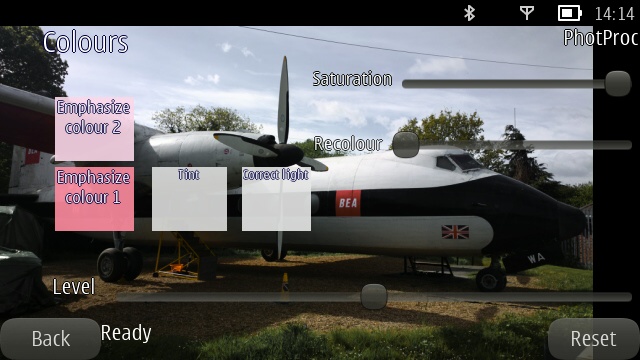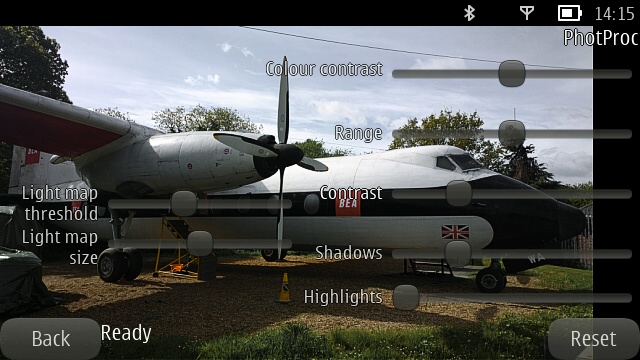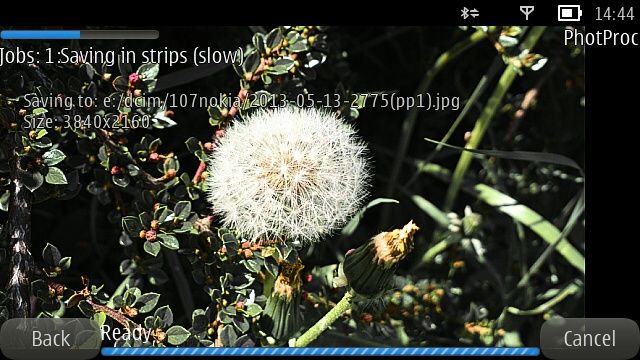Here's the official description of PhotProc, from its sourceforge home page:
This is a photo editing application for Symbian, written in Qt. It's especially designed for the Pureview 808 smartphone. It lets you edit photographs up to very high resolutions. The editing tools are primarily aimed at amateur photographers, so: filtering for different light levels, colours etc. You can't do things like paint on top of photographs or combine 2 photographs together.
As you'll see from my walkthrough below, this is a very different beast to the onboard Symbian photo editing functions, though there is some overlap - brightness, saturation, contrast, resizing, and so on. But most of PhotProc's functions are new to Symbian.
Although most of the photo adjustments on offer are previewed fairly quickly (a few seconds), so that you can see their effect, actually rendering all your changes into a finished JPG can take up to ten minutes, which is why the processing is hived off to a background thread, with the progress off the current thread indicated by a small blue bar at the top left of the main interface.
The idea is that you carry on editing other images as needed, perhaps queueing other changes to be rendered, and then you get on with your life. Symbian's multitasking and can handle this sort of behaviour well. Later, you check Gallery on the phone and there are your new renders, to be admired.

Starting up...

Handily, PhotProc comes with a demo image pre-loaded, so that you can play around with the functions even if you haven't got any suitable images of your own...

Loading up one of my own photos...

'About' info and some details on my image....

Starting to make changes, here bumping up the contrast and saturation...

Getting advanced now, let's de-noise it a little and also apply some sharpening (hey, got to match that Samsung Galaxy S4!)...

I'm not too sure how this bit works, but you can select colours you want to 'emphasise'. Any pointers welcomed from readers...

If you know what the 'light map threshold' is then you're a better man than I - suffice to say, plenty to fiddle with here. Everything you change does get previewed on screen (i.e. at nHD resolution) and you can also zoom in using multi-touch if you want to see the effect on a particular part of your image...

Finally, tap on 'Save' and a new processing job is kicked off. Note that you can carry on using the phone, even editing other images, while the processing takes place...

Viewing the finished result in Symbian Gallery. Too sharp? Yes, perhaps. Ah well, back PhotProc I go....
File PhotProc under 'for photo geeks only', I think, but its mere existence is to be applauded. The developer freely admits that PhotProc is perhaps too slow in its current implementation, but I know he'd love feedback on this (maybe add to this thread?) and other aspects of this new application. You can download the latest installer for PhotProc here. Note that it's open source (and therefore, by definition, free).
